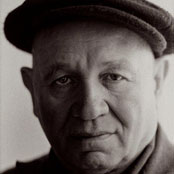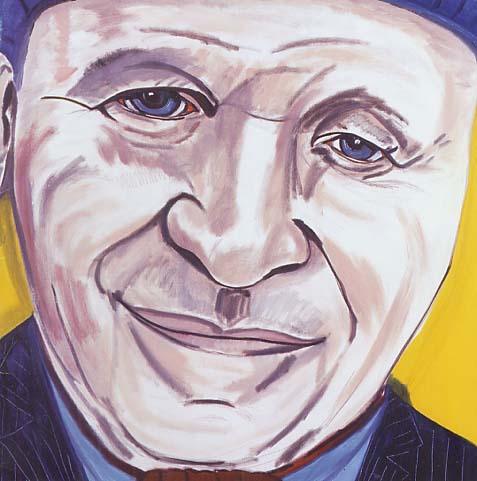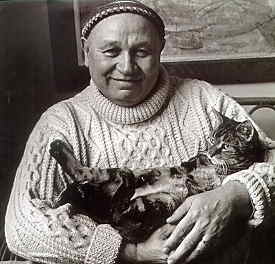Bearden in his Harlem studio in the early 1980's, with a photo of his paternal great-grandparents, Rosa and H. B. Kennedy, on their Graham Street porch in Charlotte. (Information by Tom Hanchett, Levine Museum of the New South Staff Historian)
Romare Bearden was born in Charlotte, NC, and grew up in the Harlem section of New York City. At their home, Bearden’s mother, an editor and political organizer, entertained key figures from what came to be known as the Harlem Renaissance, a creative ferment of writers, musicians, artists, and intellectuals. The young Bearden also spent time at Prohibition night clubs and the jazz scene, even while earning a mathematics degree from New York University.
During these same years, Bearden spent many summers in Mecklenburg County where his grandfather was a preacher. Here, the rural South’s cabins and fields, community rituals, and strong women captured his imagination. That is, his influences were many and varied.
Evening Limited to Memphis, 1987
paint and paper collage on board
HMA purchase partially funded by Carolina Mills and friends, 1989.5
Early on, Bearden debated whether to be an artist, a musician, or a professional baseball player, though he eventually settled on being an artist. He used ideas from math and music, especially jazz, in his art, along with aspects of his many other influences. As a result, his work is infused with the sounds and rhythms of jazz and the blues; the mystery of popular religion and obscure ritual, echoes of European old master painting and of African art, and the rich colors and atmospheres of the places he loved.
Bearden joined the United States Army in 1942 and served until 1945. His experience of service was an example of the continuing effects of racial discrimination in the United States, even during war. (For more on this phase of his life, see this earlier HMA blog post.) After that service and through the 1960’s, Bearden studied in Paris, Africa, and China, met other artists such as Picasso, and painted in a range of styles. When he ultimately settled on expressing both universal and intimate realities through the twin themes of life in urban Harlem and in rural North Carolina, he also settled on collage as his medium, straight-cut colored and re-painted paper, no appliques. He found a creative complement to collages in printmaking. Success and honors have followed over the years and have recently been re-kindled. Bearden is once again widely collected and exhibited.
When asked why his art works mostly referred back to the same themes of music and jazz, Bearden responded that “It is not my aim to paint about the Negro in America in terms of propaganda … [but rather] the life of my people as I know it, passionately and dispassionately as Brueghel. My intention is to reveal through pictorial complexities the life that I know.” (Above, Bearden in a 2004 photograph by Frank Stewart, in an 2001/02 portrait by his artist friend Frederick J. Brown, and with his cat Gippo.)
Works from the Museum's collection by artists who were influenced by the Harlem Renaissance movement were exhibited at HMA between February 6 and May 29, 2016 . Artists included Elizabeth Catlett, Romare Bearden, Jacob Lawrence, Sharif Bey, Juie Rattley III, Kara Walker and more. (Links connect to HMA blog posts about each artist.)
In the summer of 1998, a selection of Bearden’s prints were shown at HMA in an exhibit called Mother and Child.
This post is # 18 of the 75 stories to celebrate HMA's 75 years.
Post by Karin Borei, HMA Project Coordinator, writer and editor as needed, and HMA blogger since our blog's inception in March 2015






